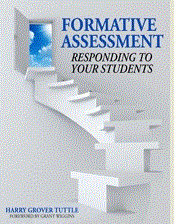Group texting programs fall into two categories. The first category consists of teacher- to-student text programs such as Reminder 101, . In these programs, the teacher sends out text reminders, announcements, notes, etc. to the whole class with just a click of button. These programs are teacher -centered since the teacher pushes out information but the students cannot respond. Some program may allow for the teacher to send out surveys or polls.
The other category for group texting progams is student centered. In programs such as Cel.ly,, any student can respond. Any student can create a new topic for discussion. The class can have an online discussion, create a collaborative story, contribute their individual reactions, etc. Students can interact with each other about a learning topic.
David Murphy wonders if group texting is shaping up to be the next big battleground between the Web’s social (or search) superstars.
I would like to see the following in any new educational group texting program that allow all users to participate:
– Students can easily join the texting group without the teacher having to put in each students’ number or name Teachers can just give out a code.
– The class texting is self-contained, private and secure.
– Teachers or students can create distinct conversation topics.
-The teacher or students can go back and review the previous conversations.
– Each conversation topic has its own name.
– Each conversation is self-contained.
– Within each conversation, there can be threads so students can follow a particular topic.
– The teacher can choose from an open chat to a moderated chat. Some teachers may want to start out with moderated chats to help students learn how to better communicate.
– The texting will be free. Students and teachers will not be charged texting units against their data plan since the class texting generates so many texts. For example, if twenty five students make four comments each, that is 100 text messages.
– The program will allow students with a laptop or desktop to text.
– Students and teachers can send pictures or images.
– The teacher can sort the participants or see an alphabetical list of all participant within a conversation to see if all have participated.
– The teacher can privately text students to offer encouragement or to offer suggestions for improvement.
– The group texting program will be free to use.
– The texting program will connect to or allow easy transfer to other social media.
If you know of a group texting program that meets those characteristics, please let me know so I can share it with my readers.
My ebook, 90 Mobile Learning Modern Language Activities, is available at http://bit.ly/90mlact.
My three formative assessment books, Improving Foreign Language Speaking Through Formative Assessment, Formative Assessment: Responding to Your Students and Successful Student Writing Through Formative Assessment, are available at http://is.gd/tbook
My modern language blogs are now at http://bit.ly/imprml. I have developed 27 Spanish activities and 4 Modern Language Visual activities in which students begin to express themselves in the modern language and to move toward spontaneous speaking Teacherspayteachers: http://bit.ly/tpthtuttle


